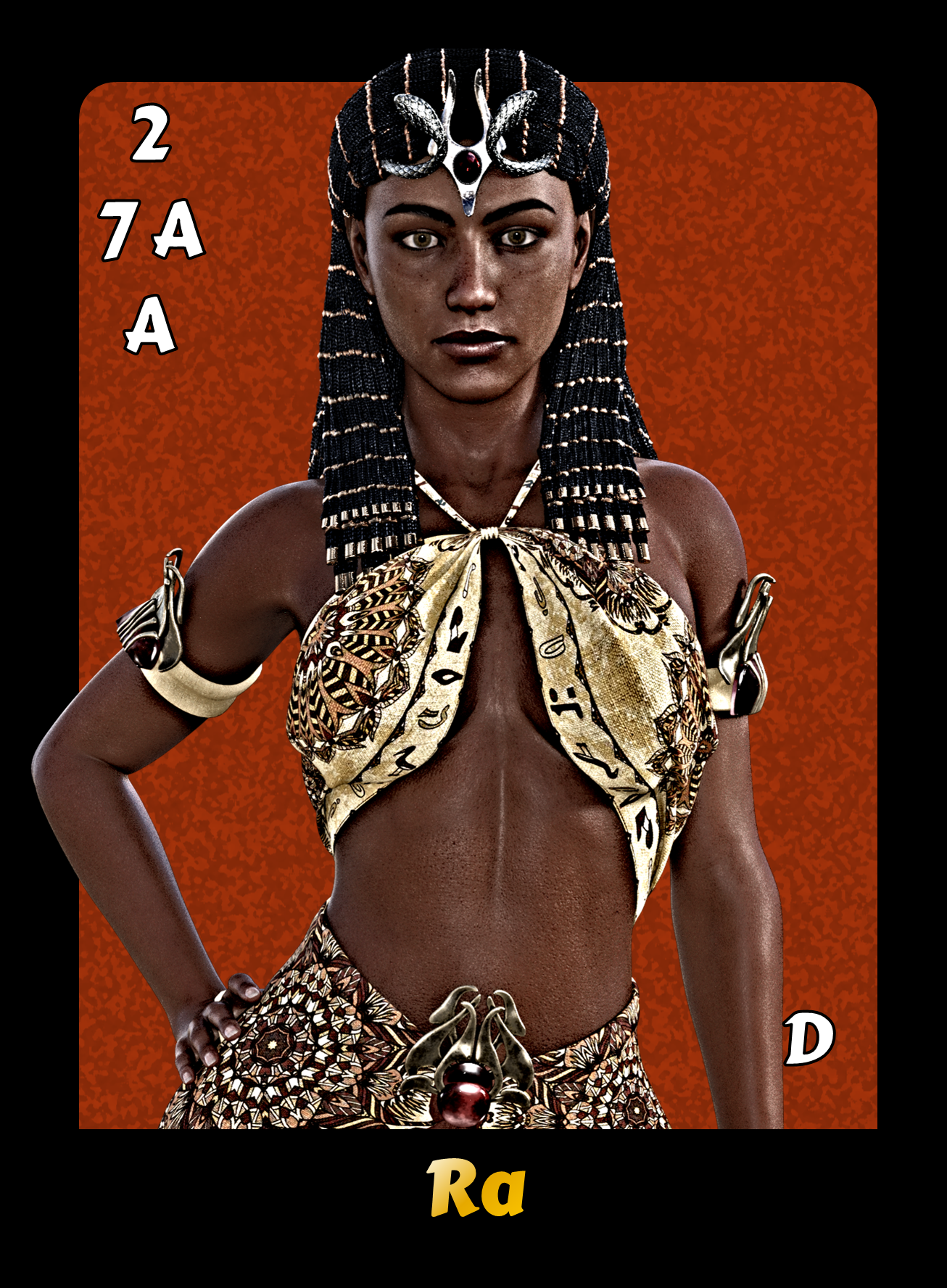Ra
Ra was considered the King of the Egyptian Gods according to Egyptian myth, however, in reality, Ra was Anubis’ chief advisor, and defacto representative in State Affairs.
Ra, the Sun God, stands as a prominent figure within the Anunnaki, a major general in their cosmic hierarchy and the revered King of the Egyptian Pantheon. In the annals of history, Ra is recognized as the giver of life, a deity whose influence extends across the mortal realm and beyond. Unlike the more enigmatic Anubis, Ra is a visible force, commanding attention from mortal creatures, sentient and otherwise. Her domain encompasses the day, her essence embodied in the radiant sun, and her insatiable thirst for knowledge directed towards unraveling the mysteries of the fiery celestial body that sustains life across the cosmos.
As the cosmic commander of the Anunnaki, Ra's role transcends the earthly plane, reaching into the vast expanse of the universe. She is a beacon of light, both figuratively and literally, guiding and sustaining life across the cosmos. The sun, akin to Ra's essence, is a multifaceted force, capable of creation and, paradoxically, destruction on a cosmic scale. Ra's brilliance mirrors the complex nature of the sun, radiating beauty while harboring the potential for cataclysmic events.
The significance of Ra as a major general among the Anunnaki lies in her visibility to mortals. Unlike the subtle and mysterious nature of Anubis, Ra's influence is felt with every sunrise. The sun, as Ra's chariot, traverses the sky, bringing illumination and warmth to the world. This tangible connection between Ra and mortal life reinforces her status as a divine being intimately tied to the cycles of existence.
Ra's pursuit of knowledge delves into the intricate workings of the sun, a burning ball of gas that extends its influence far beyond the boundaries of our solar system. In many ways, Ra mirrors the duality of light itself—a wave and a particle, capable of nurturing life through the nutrients trapped within it. Much like the photosynthesis process where plants absorb sunlight to grow and flourish, Ra's cosmic influence spans the creation and sustenance of life forms across diverse corners of the cosmos.
The sun, as a source of both light and heat, symbolizes Ra's benevolence in providing the essential elements for life. Yet, this celestial body also holds destructive potential, with solar flares and other cosmic phenomena capable of altering the destiny of planets. Ra's cosmic understanding encompasses the delicate balance between creation and destruction, mirroring the intricate dance of light that permeates the universe.
Ra's radiant presence in the Egyptian Pantheon elevates her to the status of a celestial monarch. Her rule extends beyond the mortal realm, commanding respect and devotion from mortal beings who gaze upon the sunlit heavens. The symbolism of Ra as the giver of life emphasizes her nurturing role in the grand tapestry of existence.
In contemplating Ra's cosmic significance, one must recognize the interconnectedness of her divine nature with the fundamental forces that govern the universe. Her pursuit of knowledge mirrors humanity's quest to comprehend the cosmos and our place within it. Ra's teachings, conveyed through the daily rising and setting of the sun, offer a tangible connection to the mysteries of existence and the cyclical nature of life.
Ultimately, Ra, the Sun God of the Anunnaki, stands as a radiant embodiment of creation and destruction, light and warmth, and the profound mysteries that govern the cosmos. Her influence extends far beyond the mortal plane, leaving an indelible mark on the cosmic tapestry of existence. In the dance of light and shadows, Ra's celestial presence remains an enduring symbol of life's cyclical nature and the eternal pursuit of knowledge that defines the Anunnaki's cosmic endeavors.





